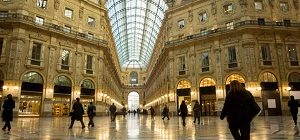 Are you going on holiday to Rome in Italy? Do you want to visit the Sistine Chapel in the Vatican City? Our guide to the Sistine Chapel in the Vatican gives you the facts & information you’ll want to know.
Are you going on holiday to Rome in Italy? Do you want to visit the Sistine Chapel in the Vatican City? Our guide to the Sistine Chapel in the Vatican gives you the facts & information you’ll want to know.
The Sistine Chapel is the main chapel located in the Vatican City in Rome. Although part of Rome, it is not technically part of Italy. As the Vatican City has sovereign statues making it the smallest state in the World.
Among other things, the Sistine Chapel is famous because it is here that the heads of the Catholic Church meet to decide the new pope after the previous one has died.
Origins of the Sistine Chapel in the Vatican
The origins of the Sistine Chapel date back to the 15th century when the building of this chapel was commissioned by Pope Sixtus IV.
However, the completion did not occur until at least a couple of hundred years later. Culminating with the world – famous frescoes which are believed to be the pinnacle of renaissance art in Italy.
Architecture
The architecture of this artwork relies heavily on inspiration from the bible. The dimensions are the same as those of the temple of Solomon as given in the Old Testament. The Sistine Chapel is rectangular in shape with a flat ceiling.
Art
The highlight of any visit to the Sistine Chapel in the Vatican is the artwork on display. Several of the best renaissance artists in Italy spent years, and have all left their permanent mark here.
Boticelli and Signorelli are just two examples of the high calibre artists that worked on the Sistine Chapel during the 16th century and depicted the lives of Jesus and Moses in their paintings for all to see. However, the artistic highlight is the frescoes painted on the ceiling of the Chapel by Michelangelo who started working in 1508.
The centre piece of this artwork is a series of nine different paintings. Each depicting a different scene from the Old Testament. Beginning with the separation of night from day and the creation of Adam, up until the great flood at the time of Noah. Flanking this centre piece of art are several smaller paintings of various Jewish prophets.
The Last Judgement at the Sistine Chapel
The Last Judgement is another painting of world wide fame known today for its magnificent beauty.
However, its origins were quite political in that it was commissioned by Pope Paul III at the time of the reformation. When Catholicism was under threat from various other reform branches of Christianity. The naked bodies being pulled out of their graves to receive their final judgement were supposed to scare visitors into remaining Catholic.




